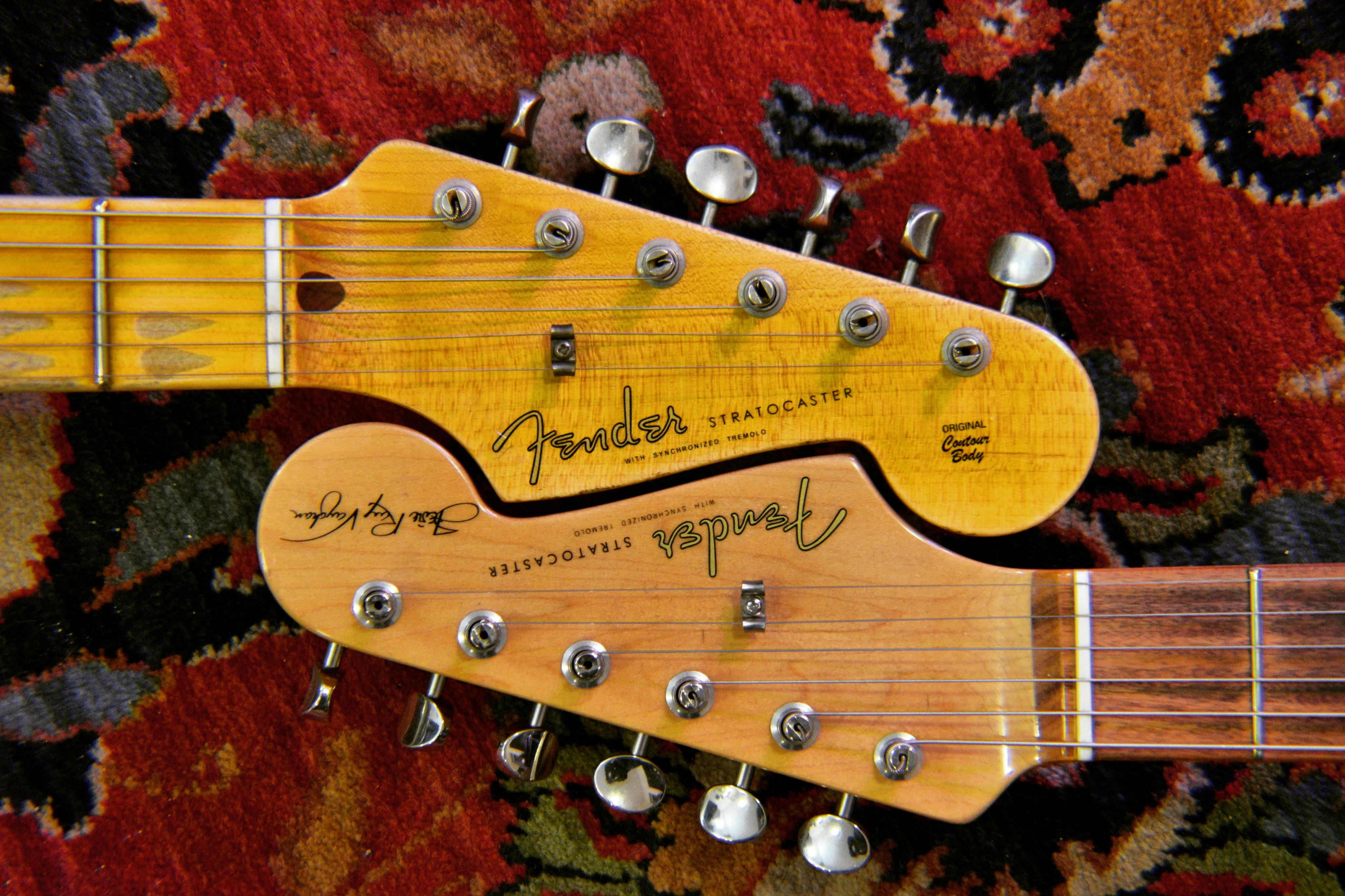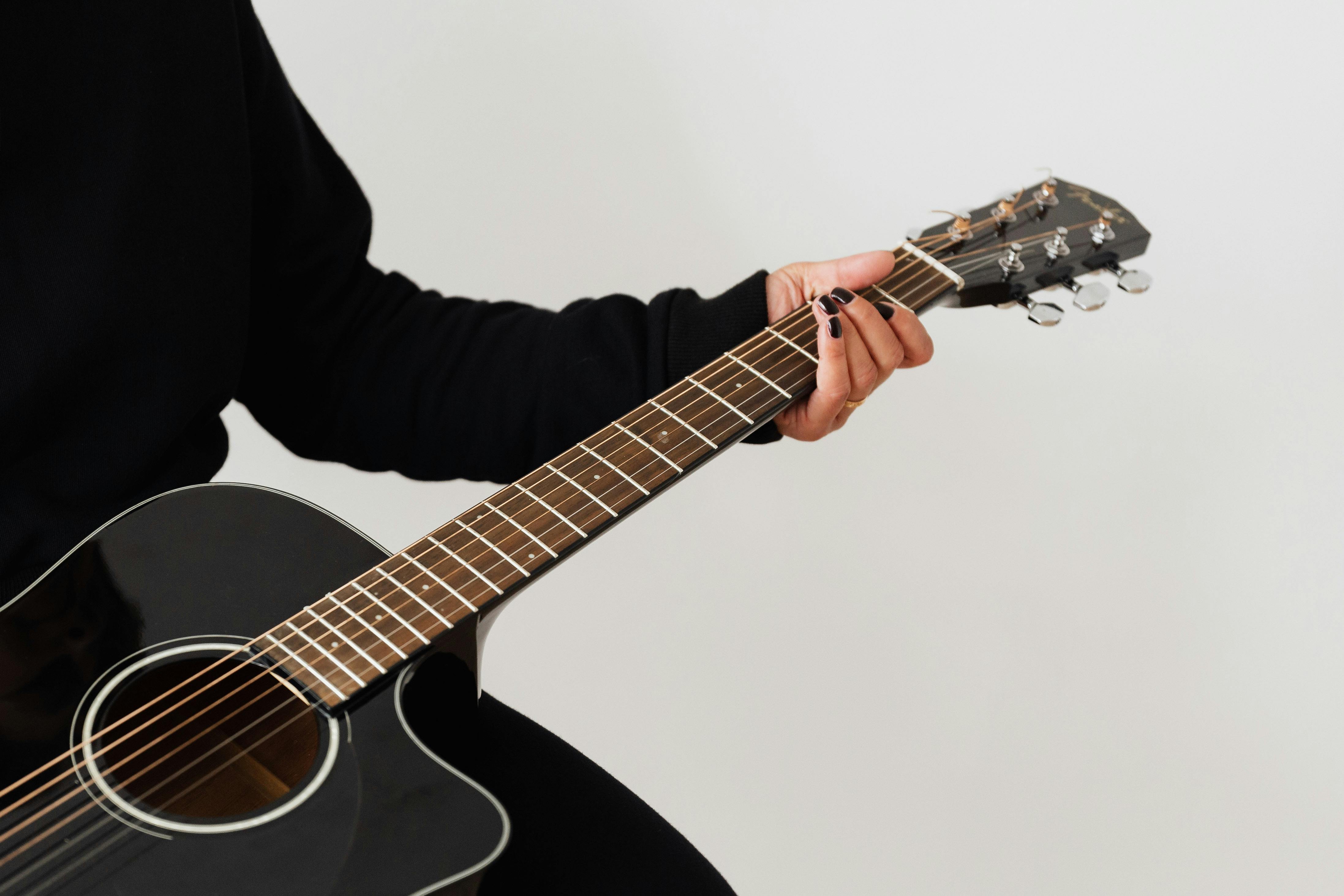DIY Stratocaster Pickup Swap with Elevator Plate Mod for Extra Twang
Learn Stratocaster pickup swap with elevator plate with expert guitar instruction and practical techniques.

Some guitarists chase Telecaster snap for years—heart set on a Strat bridge position that actually cuts through. Most pickup swap guides promise more bite, but almost none mention a simple, almost secret trick: the elevator plate mod. Turns out, adding a steel plate underneath your Strat’s bridge pickup actually changes the physics—powering up the magnetic field and unlocking Tele-style 'crack,' all without permanent changes. That’s the thing about tone. Sometimes, real improvement comes from quick, clever mods few have tried. This guide walks through every step: swapping Strat pickups and adding an elevator plate, with real tools, material choices, and expert insights built right in. The goal? Get your Strat sounding bigger, bolder, and sharper—fast.
What You'll Learn:
- Learn how to safely swap Stratocaster pickups and add an elevator plate for extra twang
- Get a complete checklist of tools and materials (including steel, copper, or brass plate options)
- See why 18-gauge steel best mimics Tele bridge tone
- Follow step-by-step instructions for pickup replacement and mod integration
- Understand how the elevator plate alters tone—plus troubleshooting tips
- Discover pro recommendations for reversible, safe installation
What You Need for a Stratocaster Pickup Swap with Elevator Plate
Tackling a Stratocaster pickup swap with an elevator plate mod doesn’t demand a pro shop—just the right tools, a steady hand, and attention to detail. Here’s what gets the job done safely and efficiently, while leaving room for easy reversibility.
Tools and Materials Checklist
Before picking up a screwdriver, gather these essentials:
- Phillips and flathead screwdrivers (for pickguard, pickup, and cavity work)
- Soldering iron with fine tip
- Desoldering pump (or braid)
- Wire cutters and strippers
- 18-gauge steel sheet (roughly 0.047" thick) for elevator plate—which mimics classic Tele bridge construction
- Double-sided tape and hot glue (or removable adhesive)
- Multi-meter for continuity testing and grounding checks
- Pickups (new set or bridge only, depending on your plan)
- Extra pickup mounting screws and tubing or springs
- Electrical tape and shielded hookup wire (just in case)
- Optional: copper or brass sheet for tone experiments, foam for cavity damping
Set up a well-lit workspace. A guitar mat or towel offers protection, while a parts tray prevents screws from disappearing. Unplug amps and gear. Let the soldering iron reach full temp before starting.
Choosing Your Elevator Plate
Not all metal plates are equal. The heart of classic Tele twang is 18-gauge steel—around 0.047 inches thick. This steel plate reflects the magnetic field, increases inductance, and adds a quick, punchy bite to the bridge pickup’s response. Copper or brass plates don’t deliver the same snap. Instead, these metals introduce warmth and subtlety, reducing treble without boosting output. According to Premier Guitar and Bill Lawrence, copper and brass are best for mellowing out harshness, while steel amps up the twang. Whatever the metal, the plate should fit snugly under the pickup base and never touch pickup leads or lugs.
In short, steel wins for anyone chasing Tele-inspired attack. For smoother, rounder highs, experiment with copper or brass. Just remember: material choice shapes the final sound more than the pickup itself in this mod.
Step-by-Step Stratocaster Pickup Swap with Elevator Plate Mod
Transforming your Strat’s bridge pickup with an elevator plate isn’t complicated, but it does demand patience, focus, and the right order of operations. Follow these steps for clean installation and reliable results—plus a shot of instant Tele-style twang.
Step 1: Remove Strings and Pickguard
First, slacken and remove the strings to avoid damage. Place them aside if reusing, but most modders prefer a fresh set after surgery. Next, unscrew the pickguard carefully, keeping an eye on screw locations—some Strats have longer screws near the jack. Gently lift the pickguard, watching for attached wires to the output jack or ground.
Step 2: Remove Old Pickup
Before desoldering anything, snap a photo of the wiring—especially lead color, ground, and hot connections. Use the soldering iron’s fine tip to heat and remove wires at the switch and pot lugs, or at the pickup directly. Use a desoldering pump or braid for tidy removal. Unscrew the pickup from the pickguard, keeping the screws and springs or tubing organized.
Step 3: Prepare and Install the Elevator Plate
Trim your piece of 18-gauge steel so it’s just smaller than the base of the new (bridge) pickup bobbin. The trick is leaving room around screw holes and lead terminals—contact here risks shorting or hum. Affix the plate with double-sided tape, then spot-weld with a dab of hot glue (for reversibility). If grounding is desired, solder a dedicated wire to the plate and route it to the standard ground point. For copper or brass experiments, follow the same shape guidelines.
Add a strip of foam under the plate or inside the bridge cavity to dampen potential vibration. According to Guitar.com’s DIY pickup mod guide, this step keeps things tight and prevents microphonic squeal.
Step 4: Install New Pickup
Seat the pickup—with elevator plate—into the pickguard. Use fresh mounting tubing or springs for stability and allow for height adjustment later. Solder the leads according to your pickup’s wiring scheme—most modern sets use black for ground, white or yellow for hot, but vintage-wound sets can vary. Attach the elevator plate’s ground wire if used. Double-check connections and ensure there’s no physical contact between the plate and lead wires or terminals.
Premier Guitar’s mod experts caution: Any contact between elevator plate and active wiring can mean hum, dead spots, or full loss of bridge output. Always test continuity before closing up.
Step 5: Reassemble and Test
Replace the pickguard, checking for pinched wires along the cavity edges. Restring the guitar and tune up. Plug into an amp and check for proper function—no hum, full output, all switch positions working. Try both clean and driven tones to spot tonal changes instantly.
Finally, adjust the pickup’s height. For standard Strat bridge pickups, Premier Guitar suggests about 2.5 mm from the low E and 2.0 mm from the high E, measured with fretted final fret. Start here, but listen: the new magnetic field might call for small tweaks. If output feels too hot or dull, lower or raise the pickup slightly until you hear the sweet spot—the Tele-style snap with none of the icepick harshness.
How the Elevator Plate Mod Changes Your Strat’s Tone
The elevator plate mod isn’t snake oil—it changes the pickup’s basic physics. When 18-gauge steel sits under the pickup, it reflects and focuses the magnetic field, amplifying the attack and making every note snap. Want objective proof? Bill Lawrence and Premier Guitar both break down why this works: it increases pickup inductance and the strength of the magnetic field, directly shaping what you hear.
Steel vs. Copper/Brass Plates: Tonal Differences
Here’s what players and engineers consistently hear:
- Steel plates: Boost output, create sharp, punchy attack, and mimic Tele bridge twang by physically enhancing the pickup’s magnetic pull.
- Copper/brass plates: Lower the resonant peak, broadening warmth and rolling off excessive highs; won’t add punch or snap, but tame icepick treble.
Premier Guitar’s research shows steel as the go-to for those craving extra crack and bite, while copper or brass can round off harsh edges in a bright guitar. Copper and brass plates also introduce 'eddy-current' effects—a kind of natural high-frequency filter—while steel magnifies both output and the fundamental frequency. The result is a fatter, louder, more articulate sound in the bridge position, especially.
Phase Shift and the 'In-Between' Strat Sound
The deeper magic here isn’t just in raw output. According to Premier Guitar’s Mod Garage theory, adding a metal baseplate can shift a pickup’s phase by 90°, especially noticeable in Strat’s “in-between” switch positions (#2 and #4). This phase change smooths out comb-filtering, letting the in-between tones sing with extra Tele-like complexity. Players sometimes describe the sound as 'wider,' more dynamic, and instantly recognizable as classic American single-coil pop.
The elevator plate mod is also 100% reversible. Prefer the original sound? Just peel off the plate, reassemble, and you’re back to standard Strat territory—no permanent rewiring, no risk.
Troubleshooting and Pro Tips for a Successful Mod
It’s rare, but problems do show up with Strat pickup swaps and elevator plate mods—usually hum, weak output, or microphonic feedback. Good news: these issues are fixable, and most result from simple mistakes.
Diagnosing Hum and Output Issues
- Excess hum: Check ground wires first. The plate should tie to main ground, not hot.
- No output: Inspect solder joints at pots and the switch; a cold joint or broken wire kills signal fast.
- Bridge out only: Double-check plate placement—make sure it isn’t contacting pickup leads, lugs, or switch terminals.
If you hear weird, open-string ringing or squeals, check inside for loose wires or a floating plate. A piece of foam pressed between the plate and cavity usually quiets things down instantly, as Guitar.com recommends.
Fine-Tuning Your Tone After the Mod
- Adjust pickup height—closer for more bite, lower for subtlety; steel-modified pickups may need lowering slightly.
- Experiment with plate material: copper or brass can tame overly bright setups.
- Consider cavity damping for ultra-low noise: insert foam or cloth around the pickup to kill buzz and rattles.
- Always keep mods reversible—tape and hot glue beat super glue and epoxy every time.
According to Premier Guitar, both the elevator plate and damping mods are completely reversible. Try different setups, materials, or pickup heights—there’s zero risk to your Strat if you take your time and check your work.
Conclusion
Combining a Stratocaster pickup swap with an elevator plate mod is one of the simplest, most dramatic tone upgrades a guitarist can make—no expensive gear, no permanent changes. With steel, copper, or brass plates and a little patience, the humble Strat bridge comes alive with Tele-inspired snap, power, and bite. The beauty is in the details: proper tools, careful plate fit, and some trial-and-error with pickup height. The science says this isn’t myth—the magnetic field, phase, and output really do change. For those chasing new tones or craving Tele twang in a beloved Strat, this DIY approach just works. Grab some metal sheet, heat up the soldering iron, and dial in a sound that’s all your own.
Frequently Asked Questions
How do I install a twang-enhancing elevator plate under a Stratocaster pickup?
To install a twang-enhancing elevator plate, trim a piece of 18-gauge steel to match your pickup’s base, keeping it clear of wires and terminals. Affix it with double-sided tape and a dab of hot glue for stability. Ground the plate if possible, then mount the pickup as usual. Ensure the plate doesn’t touch any wiring, then reassemble and test for full function and increased twang.
Can you get more twang from a Strat without changing pickups?
Yes, adding an elevator plate—a simple steel plate under the bridge pickup—increases twang without swapping the pickup itself. This mod boosts brightness, output, and attack by focusing the magnetic field upward, mimicking Telecaster bridge tone. It’s fully reversible, so you can restore the original sound easily.
What tools do I need to swap Strat pickups and add an elevator plate?
A successful Strat pickup swap with elevator plate requires screwdrivers (Phillips and flathead), a soldering iron, desoldering pump or braid, wire cutters/strippers, 18-gauge steel sheet, double-sided tape, hot glue, electrical tape, a multi-meter, and your chosen pickups. Foam for cavity damping is optional but recommended for noise control.
Is the elevator plate mod safe and reversible?
Yes, the elevator plate mod is entirely safe and reversible. It involves no permanent alteration or routing, just tape and removable adhesive. If the sound isn’t to your liking, simply remove the plate and reassemble the guitar—no harm done.
Key Takeaways
- An elevator plate made from 18-gauge steel brings authentic Tele-style twang and output to a Strat bridge pickup.
- Careful installation and grounding are essential for clean tone and safe, reversible results.
- The mod’s effect is immediate and dramatic, but fully reversible—perfect for experimenting with Strat tone.
- Mixing pickup swaps with elevator plates allows creative tone shaping far beyond factory specs.
Related Topics
Explore more articles in these topics to deepen your knowledge.
Related Articles

2025 Step‑By‑Step Guide to Installing a Humbucker in a Stratocaster
Master how to install humbucker in stratocaster safely. Avoid wiring mistakes—get expert tips, diagrams, and troubleshooting help. Start your upgrade now!

Complete DIY Guide to Electric Guitar Fret Leveling, Crowning & Polishing (2025)
Discover how to master DIY guitar fret leveling crowning polishing with expert tools and clear steps. Upgrade your guitar today!

Stratocaster Humbucker Conversion with Coil‑Split and Treble‑Bleed Mod (2025 DIY Guide)
Master Stratocaster humbucker conversion, coil split, and treble bleed mods. Get step-by-step wiring tips and unlock pro-level tone versatility today!
Discover more insights from our blog to enhance your musical journey.
